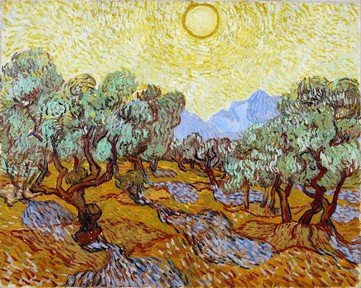Quiz Answer Key and Fun Facts
1. "Landscape with Flooded Fields" is an 1873 oil by an artist who was born in the Caribbean. Called "the dean of Impressionist painters", who is the artist?
2. "Harbor of San Marco" was painted sometime before 1745, and has the look that is typical of this artist's work. Particularly known for his depictions of views of Venice and London, who is this wonderful artist?
3. "Solitary Tree", or "Village Landscape in Morning Light", as it is also known, is an 1822 oil by one of my favorite artists. Widely considered the most important German painter of his generation, who is this member of the German Romantic school?
4. The magnificent "View of Dresden by Moonlight" is an 1839 oil by another member of the Romantic school. Who is this artist, who has been described as "the father of Norwegian Landscape Painting"?
5. Called simply "Garden Path", this 1902 oil is typical of work by one of the all-time greats. Credited with founding French Impressionism, who is this painter?
6. "Views of the Island of San Pietro di Castello" is an oil from the second half of the 18th Century. Considered one of the last practitioners of the classic Venetian school, who is this artist?
7. "Port-en-Bessin" is an 1888 oil painted using the chromoluminarism technique. Changing the direction of modern art through the foundation of Neo-Impressionism, who is this artist?
8. "Malakoff" is a 1898 oil by an artist probably best-known for his jungle scenes, although he never actually left France or ever saw a jungle. Who is the Post-Impressionist whose particular style is known as 'Primitivism'?
9. "View of Epsom" is not one of his best-known works, as that would make it too easy, but just look at that amazing sky and you'll probably recognize the style. Amazingly, he was not that well known at home during his lifetime, and it was across the Channel, where he inspired the Barbizon school, that he was most appreciated. Who is this English artist?
10. "The House of Père Lacroix" is an 1873 oil by an artist said to form the link between Impressionism and Cubism. Who is this French Post-Impressionist?
Source: Author
EnglishJedi
This quiz was reviewed by FunTrivia editor
looney_tunes before going online.
Any errors found in FunTrivia content are routinely corrected through our feedback system.

